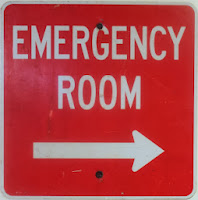There’s not much need to switch on the weather the past few days; step outside and your body will to respond immediately to sudden increase in temperatures in the Atlanta area.
Several factors affect the body’s ability to cool itself during extremely hot weather -- with temperatures reaching and expecting to continue near the 100 degree mark before cooling slightly. Our North Atlanta Urgent Care physicians want to share the critical importance of keeping your body temperatures within safe levels and sufficiently hydrated. Our NAUC practice has had a few inquiries about the effects of dehydration and we anticipate some cases of heat-related illness.
Those at High Risk
When the humidity is high, sweat will not evaporate as quickly and prevents the body from dissipating the greater heat load. This is exacerbated by other conditions including: obesity, fever, dehydration, heart disease, mental illness, poor circulation, sunburn and prescription drug and alcohol use. Those participating in outdoor activities, whether they are sport or work-related, need to be closely monitored for symptoms related to extreme heat
North Atlanta Urgent Care's Dr. Sue Kinsella, a tenured runner and athlete, has the following guidance to provide to those who finding being out of doors, or active, under extreme heat conditions: “Stay cool, stay hydrated, stay indoors if at all possible.” She also noted the importance of ozone and its associated contributions to a high heat index. “If the ozone readings are shown in the orange to red category, be advised that this is a warning flag for outdoor activity.”
Centers for Disease Control Tips During Hot Weather
Drink plenty of fluids; don’t wait until you’re thirsty to drink. If your physician has you on controlled water intake, for medical reasons, please consult with them on the amount necessary for your body.
Avoid fluids containing large amounts of sugar, caffeine or alcohol; these can increase dehydration. Also avoid very cold drinks for they can cause stomach cramping.
In situations of heavy sweating, a sports beverage can assist in replacement of lost salt and minerals. For those seeking a natural alternative, here’s a link to high fructose corn syrup-free option: http://www.nomeatathlete.com/thrive-sports-drink/
Wear light-colored, loose-fitting clothing and apply sunscreen liberally and with regularity; it’s effectiveness wanes over time.
Schedule outdoor activities with the activity and temperature in mind. Re-prioritize your day: Grass needs cutting or do you have errands in need of running? Opt for the latter and make use of commercial locations with air conditioning. Schedule lawn work for late evening.
In areas with limited air conditioning: Move to libraries, malls, theaters etc. or take cool showers. With temperatures above the high 90’s, according to the CDC, fans will not prevent heat-related issues. DO NOT leave children, the infirmed, seniors or pets in a hot car or non-cooled, confined spaces including homes without ventilation.
Signs of Heat Illness
Heat illness ranges from mild to severe with chance for death. Know the signs and take all of them seriously; it is better to over compensate than wait until it is a critical emergency.
1. Heat Cramps: Typically affect those undertaking strenuous activity as sweating depletes the body’s mineral content. Low salt levels may be the cause but heat cramps are also indicative of heat exhaustion. They are muscle spasms in the abdomen, arms or legs. If you have heart problems, or are on a low sodium diet, get medical attention. If apparently healthy: stop activity; move to a cool place; drink a replacement beverage; seek medical attention if not subsiding within one hour.
2. Heat Exhaustion: The following are signs of heat exhaustion and warrant attention. If heat exhaustion is left untreated, it may progress to heat stroke. Seek medical attention if: the symptoms are severe; the victim has heart problems for high blood pressure. Or, if you are unsure appropriate management techniques. Symptoms are the following:
Heavy Sweating – When sweating stops, this is a danger sign.
Paleness
Muscle Cramps
Tiredness
Weakness
Headache
Nausea or vomiting
Fainting
3. Heat Stroke: When the body can no longer effectively regulate its internal temperature, it will begin to rise rapidly, the sweating mechanism fails and it is unable to cool down properly. According to the CDC, core temperature may rise to 106 degrees, or higher, within 10 to 15 minutes. Heat stroke may cause permanent disability or death if medical emergency treatment is not provided. If you see any of the warning signs noted below, call for medical assistance immediately and begin cooling the victim by:
a. Move them to a shady area.
b. Cool victim rapidly by whatever means available.
c. Monitor body temperature until it drops below 101-102 degrees F.
d. If emergency personnel are delayed, call the emergency room for further instructions.
e. Do not give the victim fluids to drink.
Warning signs include:
Extremely high body temperatures (above 103 orally)
Red, hot and dry skin
Rapid, strong pulse
Throbbing headache
Nausea
Confusion
Loss of consciousness
Muscle twitching








